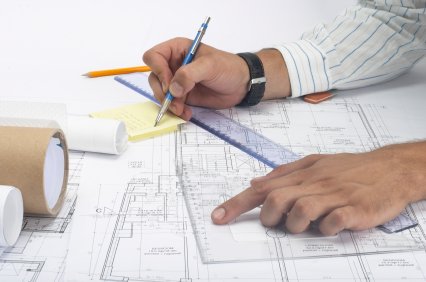Architect Interview Questions You Should Be Equipped to Answer
Wiki Article
Comprehending the Diverse Profession Paths Available for Aspiring Architect
As a hopeful Architect, you have a world of occupation courses waiting for you. Whether you're attracted to conventional design or the subtleties of sustainable design, there's a specific niche that aligns with your rate of interests.Typical Style: Creating Frameworks and structures
Conventional architecture focuses on developing buildings and structures that blend performance with visual charm. Your designs can show cultural heritage, showcasing neighborhood practices while fulfilling modern-day requirements.You'll establish skills in drafting, model-making, and site evaluation, allowing you to envision and interact your ideas efficiently. Involving with clients, you'll need to understand their vision and translate it right into practical designs.
In addition, developing codes and sustainability methods are crucial in your work, guaranteeing your frameworks are safe and eco-friendly. As you grow in your profession, you'll locate opportunities in property, industrial, or perhaps restoration jobs, each offering unique obstacles. Embracing conventional design leads the way for a satisfying job that pays tribute to the past while forming the future.
Urban Preparation: Forming Communities and Public Spaces
As an aspiring Architect, you can play an important function as an urban coordinator, transforming exactly how communities work and connect. By employing neighborhood interaction techniques, you'll assure that citizens have a voice fit their environment. And also, integrating sustainable design principles will certainly help produce areas that not just fulfill today's demands however also secure the future.Function of Urban Planners
While lots of might consider architects as the sole dreamers behind structures, city planners play an important duty fit the broader landscape of communities and public spaces. They analyze land use, zoning regulations, and community needs to produce sustainable environments that improve quality of life. By working together with numerous stakeholders, you'll assist develop parks, transport systems, and houses that promote social communication and availability. Urban coordinators likewise concentrate on ecological considerations, ensuring that developments integrate eco-friendly spaces and assistance biodiversity. Your knowledge in spatial layout and neighborhood characteristics permits you to imagine future growth while preserving cultural heritage. In this important role, you'll straight affect how people experience their surroundings, making every task a chance for favorable modification.Neighborhood Interaction Strategies
Reliable area engagement methods are crucial for metropolitan organizers to guarantee that the voices of locals are heard and valued in the preparation process. To cultivate significant discussion, you need to focus on open forums and workshops where neighborhood participants can express their ideas and issues. By actively including and listening feedback, you'll produce rooms that mirror the community's demands, eventually leading to more successful and sustainable urban environments.Lasting Style Principles
When creating metropolitan areas, incorporating lasting layout concepts is important for developing environments that thrive both environmentally and socially. You ought to begin by focusing on energy performance, utilizing materials that decrease waste and promote recycling. Consider integrating environment-friendly spaces, like yards and parks, to improve biodiversity and boost air high quality. Advertising walkability and public transport can reduce dependence on cars, fostering a healthier area.Designing with water conservation in mind is also essential-- believe regarding rain yards and permeable surfaces to take care of stormwater. Involving community participants during the planning procedure warranties that the rooms you create fulfill their requirements and encourage social communication. By embracing these principles, you'll add to lively, lasting urban landscapes that benefit everyone.

Landscape Architecture: Developing Sustainable Exterior Atmospheres
As you check out landscape style, you'll find important style concepts that produce beautiful and functional exterior rooms. Sustainable practices play a crucial function in ensuring these environments thrive while lessening ecological impact. And also, you'll discover a range of profession opportunities that enable you to make an actual distinction in exactly how individuals interact with nature.Layout Concepts in Landscape
Comprehending style concepts in landscape style is important for creating sustainable outdoor atmospheres that integrate with nature. You'll need to contemplate aspects like scale, equilibrium, and percentage to ensure your layouts really feel cohesive and welcoming. Incorporating indigenous plants not only enhances biodiversity however likewise reduces water usage, making your landscape resistant. Consider the circulation of room and how people interact with it; pathways and seating locations need to invite exploration and relaxation. Additionally, take notice of seasonal modifications, developing with products that enhance the discover here surroundings year-round (Architect). By focusing on sustainability and looks, you can create outdoor areas that improve the area and advertise wellness. Embracing these concepts will certainly set a strong foundation for your career in landscape architecture.Sustainable Practices Summary
Lasting techniques in landscape architecture not only focus on aesthetics however additionally focus on environmental health and resource conservation. You can make rooms that promote soil wellness, such as exercising and making use of organic products permaculture concepts. Ultimately, these practices ensure your designs benefit both individuals and the environment for years to come.Occupation Opportunities Exploration
With a strong foundation in sustainable techniques, landscape architecture supplies a variety of profession paths that allow you to make a purposeful impact on the atmosphere. Urban planners typically work together with landscape designers to develop green spaces in metropolitan setups, enhancing city livability. If you're enthusiastic regarding education, think about becoming a landscape style teacher, inspiring future generations.Sustainable Style: Focusing on Eco-Friendly Practices
As you discover your profession in style, embracing eco-friendly practices can set you apart in an affordable field. Lasting style focuses on producing structures that minimize ecological influence while boosting owner health. By integrating renewable materials, energy-efficient systems, and lasting structure techniques, you'll contribute to a greener future.Begin by acquiring expertise of eco-friendly accreditations like LEED or BREEAM, which can click reference reinforce your qualifications. Think about just how all-natural light, ventilation, and thermal effectiveness can maximize design. Team up with engineers and environmental specialists to introduce remedies that decrease waste and conserve resources.
Do not neglect the importance of community participation-- engaging neighborhood stakeholders can motivate styles that balance with the atmosphere. As clients progressively prioritize sustainability, your experience in environmentally friendly practices will certainly not just draw in jobs but also satisfy your enthusiasm for accountable architecture. Welcome this vital aspect of the career, and view your profession grow.
Historic Conservation: Safeguarding and Restoring Cultural Heritage
While you begin on your building trip, think about the important role of historical preservation in maintaining our cultural heritage. This area concentrates on the security and remediation of significant buildings, websites, and structures that inform the stories of our past. By involving in historic conservation, you'll aid safeguard the architectural heritage that shapes community identification.As a historical preservation Architect, you'll examine historical relevance and evaluate the condition of structures. You'll work closely with conservationists and chroniclers to assure authentic restoration methods are employed. This profession path enables you to mix creativity with study, enabling you to create remedies that value initial products and workmanship.
Your work not only adds to sustainability by recycling existing structures however likewise cultivates a feeling of satisfaction within communities. Accepting this path will help you come to be a guardian of history, maintaining the view tales and aesthetics that enhance our lives.
Interior Architecture: Enhancing Indoor Spaces
Historic conservation and interior design both share a commitment to improving the developed setting, however they concentrate on various elements. While historical preservation highlights preserving a structure's historical and cultural value, indoor design absolutely nos in on optimizing interior areas for functionality and aesthetic appeals.As an aspiring Architect, you'll find that interior design permits you to mix creative thinking with technological abilities. You'll create areas that not only look good yet also promote comfort and efficiency. This area includes comprehending just how light, color, and materials connect within a room, influencing state of mind and functionality.
You'll work with various projects, from property homes to industrial workplaces, making certain that each setting satisfies the demands of its passengers. By prioritizing user experience, you can change insides right into inspiring and useful spaces, making a considerable effect on just how people connect with their environments. Accept the chance to enhance interior atmospheres and form the way individuals live and function.
Industrial Layout: Merging Capability With Looks
Commercial design plays an essential function in developing products that perfectly blend aesthetics with performance, ensuring that what you use daily is not only aesthetically enticing yet also practical. As an aspiring Architect, you could engage yourself in this area, concentrating on making every little thing from furnishings to customer electronic devices. Your job involves comprehending individual requirements, materials, and making procedures, allowing you to produce innovative solutions that improve everyday experiences.In industrial style, you'll typically team up with makers, designers, and marketers, making certain that your layouts are not only lovely however also viable. This occupation path uses a dynamic setting where imagination satisfies practicality, making it a fulfilling option for architects interested in forming the products of tomorrow.
Often Asked Inquiries
What Educational Credentials Do I Need to Come To Be an Engineer?
To come to be an architect, you'll require a professional level in architecture, normally a Bachelor's or Master's. Additionally, you'll have to complete an internship and pass the Architect Registration Assessment to practice legally.Are There Certification Requirements for Different Architectural Job Paths?
Yes, there're accreditation demands for different architectural courses. Architect. You'll require to pass exams, full internships, and often pursue specialized training, depending on your selected focus, like landscape style, city style, or historical conservationWhat Software Application Abilities Are Essential for Designers Today?

Just How Can I Gain Practical Experience While Researching Architecture?
You can gain functional experience by interning at architectural firms, joining layout competitions, volunteering for community projects, or working together with schoolmates on real-world assignments. These possibilities enhance your abilities and develop useful connections in the industry.What Job Opportunities Exist Outdoors Typical Design Firms?
You can explore various task chances outside typical architecture firms, like metropolitan preparation, interior style, landscape design, building and construction administration, realty advancement, and even roles in sustainability consulting. Each deals one-of-a-kind difficulties and benefits.Whether you're attracted to standard architecture or the subtleties of sustainable design, there's a niche that lines up with your rate of interests.When designing city rooms, including lasting design concepts is vital for creating environments that grow both environmentally and socially.As you explore landscape architecture, you'll find essential design principles that develop attractive and functional outside rooms.Recognizing style principles in landscape architecture is important for developing lasting outside atmospheres that harmonize with nature.In industrial design, you'll often work together with makers, online marketers, and designers, guaranteeing that your layouts are not only beautiful but also feasible.
Report this wiki page